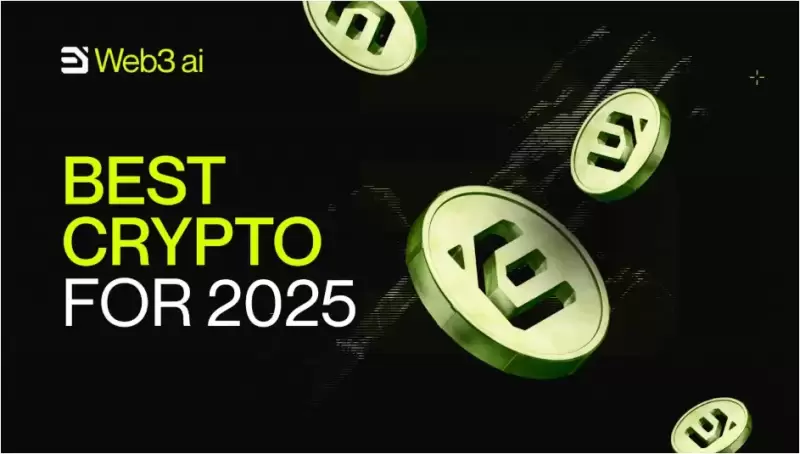 |
|
 |
|
 |
|
 |
|
 |
|
 |
|
 |
|
 |
|
 |
|
 |
|
 |
|
 |
|
 |
|
 |
|
 |
|
Cryptocurrency News Articles
The Ethereum Foundation is realigning its developmental strategy
Apr 22, 2025 at 08:30 am
to address core protocol efficiency and user experience challenges, following recent leadership changes earlier this year.

The Ethereum Foundation is shifting its developmental strategy to address core protocol efficiency and user experience challenges, following recent leadership changes earlier this year.
In a post on X earlier today, co-executive director Tomasz Stańczak outlined the updated focus areas, highlighting a move to strengthen Ethereum’s long-term scalability while boosting near-term usability.
Protocol Upgrades and a Revised Role for Vitalik Buterin
Describing discussions about the base-layer scaling roadmap as "extensive" and community-driven, Stańczak explained that the changes are designed to sharpen focus among researchers and core developers.
"Our discussions about the Layer 1 scaling roadmap have been extensive, and the feedback so far suggests that the community core appreciates our ambition," Stańczak wrote. "Turning that ambition into reality now depends on the focus of the core development teams and researchers."
As part of its strategic transition, the Ethereum Foundation is aiming to give Vitalik Buterin more time to concentrate on advanced research rather than daily operational oversight.
"We aimed, among other things, to free more of Vitalik’s time for research and exploration," Stańczak stated, noting that Buterin’s recent writings on topics like RISC-V and zkVMs have been instrumental in directing attention toward potentially "transformative technologies."
According to Stańczak, these insights have played a significant role in realigning the Ethereum community around long-term priorities, such as privacy, modularity, and decentralized infrastructure.
Buterin’s proposals are not mandates but starting points for community-led exploration, Stańczack clarified.
"This is where Vitalik’s proposals will always carry more weight—to start conversations and encourage progress in difficult research areas," he explained. He also stressed the importance of giving other researchers the same freedom, highlighting ongoing work by contributors like Justin Drake and Tankard Feist.
Overall. the Foundation’s research direction is now geared toward short-term outcomes that include better Layer-1 scaling, enhanced Layer-2 integration, and more "seamless" user experiences—especially in upcoming upgrades like Pectra, Fusaka, and Glamsterdam.
RISC-V Proposal and Developer Flexibility
The Foundation is also assessing the feasibility of moving from the Ethereum Virtual Machine (EVM) to a more modern execution environment powered by RISC-V.
This proposal, initially introduced by Buterin, suggests that RISC-V could streamline execution, improve efficiency, and simplify zero-knowledge proof implementation.
"We are exploring ways to bring forward projects that currently look three to five years away," Stańczak explained, referencing possible acceleration in next-gen execution and consensus layer development.
RISC-V's benefits include broader language compatibility and the potential for backward compatibility with existing EVM contracts. Developers could continue using Solidity and Vyper or expand into languages like Rust.
Additionally, RISC-V could improve validator performance through hardware-level customization, while maintaining core Ethereum features such as account models and contract interactions.
As research and experimentation continue, Stańczak emphasized the importance of community input: "Ethereum researchers often ask that readers recognize the exploratory nature of their posts and proposals. Focus remains essential."
Disclaimer:info@kdj.com
The information provided is not trading advice. kdj.com does not assume any responsibility for any investments made based on the information provided in this article. Cryptocurrencies are highly volatile and it is highly recommended that you invest with caution after thorough research!
If you believe that the content used on this website infringes your copyright, please contact us immediately (info@kdj.com) and we will delete it promptly.
-

-

-

-

-

-

- Several Major Cryptocurrency Firms Donated a Combined Total of Over $12.27 Million to President Donald Trump's 2025 Inauguration Fund
- Apr 22, 2025 at 12:10 pm
- These contributions highlight a growing political alignment between the digital asset sector and the current U.S. administration, which has positioned itself as an advocate for Bitcoin and broader crypto adoption.
-

- Solana Labs, Consensys, and Uniswap Donate to Donald Trump's Inauguration Fund Preceding SEC Enforcement Decisions
- Apr 22, 2025 at 12:05 pm
- United States (US) Securities and Exchange Commission (SEC) enforcement decisions follow $239 million in Donald Trump's inaugural donations, including funds from top crypto firms Solana, Consensys, and Uniswap.
-

-

- Bitcoin's impressive market growth is driving increased attention to new crypto listings despite recent volatility.
- Apr 22, 2025 at 12:00 pm
- Cortex Protocol ($CX) celebrates Bitcoin's bullish future, aligning community hype with a $250,000 target narrative. A presale nearing $5 million shows growing support for meme-powered optimism and long-term Bitcoin enthusiasm.



























































